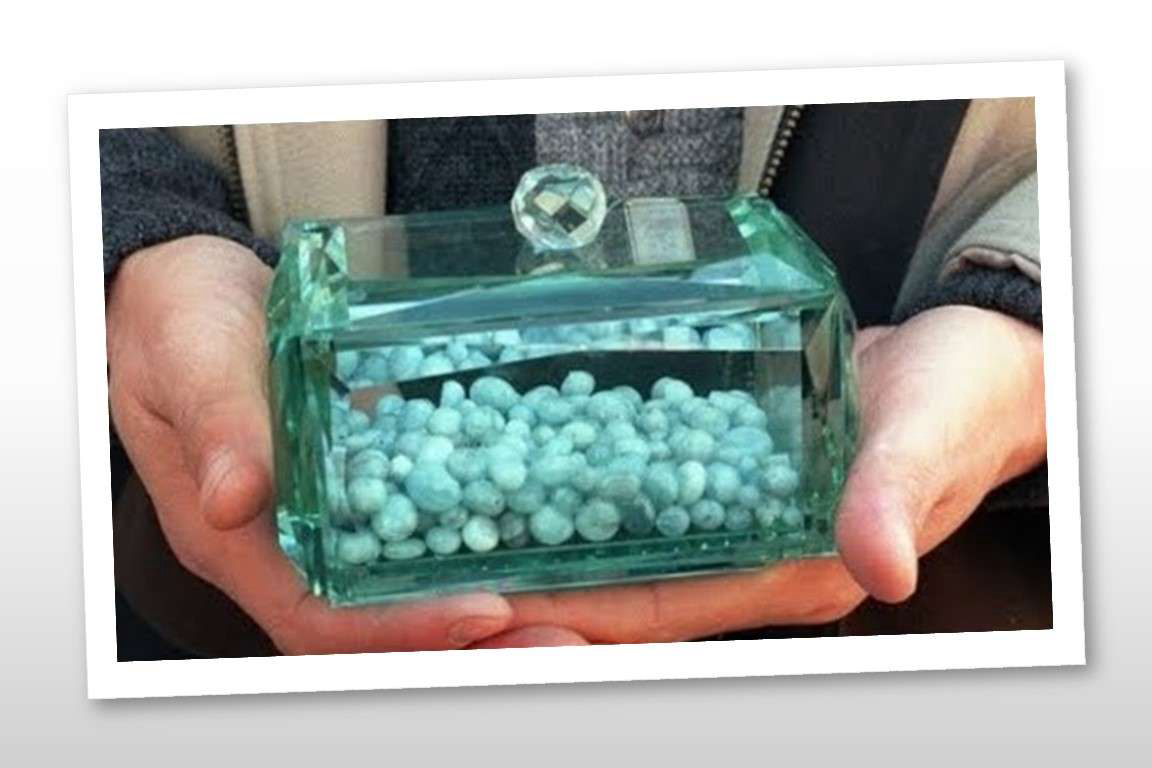
Times are changing and the cultures and rituals of human existence are evolving at a large scale. From normal birth processes to weird death rituals of human beings, several processes have transformed into another level of uniqueness. And South Korea is completely transforming the way of remembering people after their death. Numerous people in South Korea are on the way to condense the remains of the dead person into gem-like bubbles in various colors which are then displayed at home. This unique way to have the cremation ashes turned into beads or bubbles is getting quite popular in South Korea. Instead of a pot or any other utensil filled with ashes or some jewelry, people can have all the ashes returned in a more aesthetically fascinating bubble form.
A South Korean company named Bonhyang (Ashes to beads) is based in Seoul, South Korea. This company takes the ashes of a dead person, clears them, refines them into a fine powder, and then warms them to ultra-high temperature. This entire process reduces the ashes to a molten state then they solidify the ashes into crystals. On average, the ashes of one body produces up to 5 cups of bubbles. This whole process takes around 90 minutes and costs about US$ 1,200. Mr. Bae Jae-yul is the founder and owner of Bonhyang company, he started this business 13 years ago and has served more than a thousand people. He claims that the bubbles or beads made from ashes cannot become shapeless, and insects cannot grow in them.
Even some churches in South Korea are using this new method now. They lease the machines from Mr. Bae, and the church turns all the ashes into bubbles and remember the dead. One of Mr. Bae's customer explains that it feels good to see his mother's beads when he opens his eyes in the morning or goes to bed. He explains that there's no weird smell from the beads and he thinks that he is happy to keep his mother's memory as some precious stones rather than ashes.
The process of turning ashes into bubbles can be disturbing for some people, but there are many other methods in the world where death rituals are unusual than others. The Melanesians of Papua New Guinea utilized Endocannibalism, in which they used to eat the meat of the dead. The same type of rituals was utilized by some tribes of Brazil and by Aghoris in India. These practices are now banned in some parts of the world. In Ghana, people like to be buried in something that represents their lives like buried in a plane shaped coffin for the death of a pilot. The Apoyo tribe of North Philippines bury their dead under the kitchen, and many other death rituals in the world can be weird and strange for some people because they are simply different than typical death ceremonies. Now, this new practice of turning ashes into bubbles is similarly getting popular with the passing time.
The practice of beads is more popular in South Korea is because it is already a small and densely populated nation, and it is now running out of burial areas. A strange law was passed in 2000 which requires anyone to burying their dead after 2000 to remove the grave after 60 years of burial, this law resulted in a dramatic cultural shift. This creates a huge disparity in the burial and other rituals after death. And all of this automatically drags people to use the beads as a memory.
This amazing and odd practice can already be found in countries like the United Nations, Europe, and Japan, but it has not caught on as it has in South Korea. From the entire world to South Korea, this entire process of turning dead people's ashes into colorful bubbles or beads can be shocking or disturbing for some people but some are incredibly enthusiastic to keep their loved ones in a beautiful and clean state forever.
___________________________________________________________________
Reference:
https://blog.sevenponds.com/cultural-perspectives/south-korean-death-beads-replacing-burial
https://www.deseret.com/2011/11/14/20230814/ashes-to-beads-south-koreans-try-new-way-to-mourn
https://newsfeed.time.com/2012/01/25/death-beads-south-koreas-new-way-to-honor-the-deceased/
